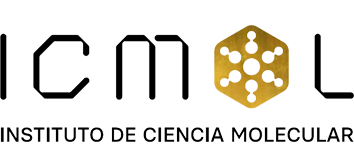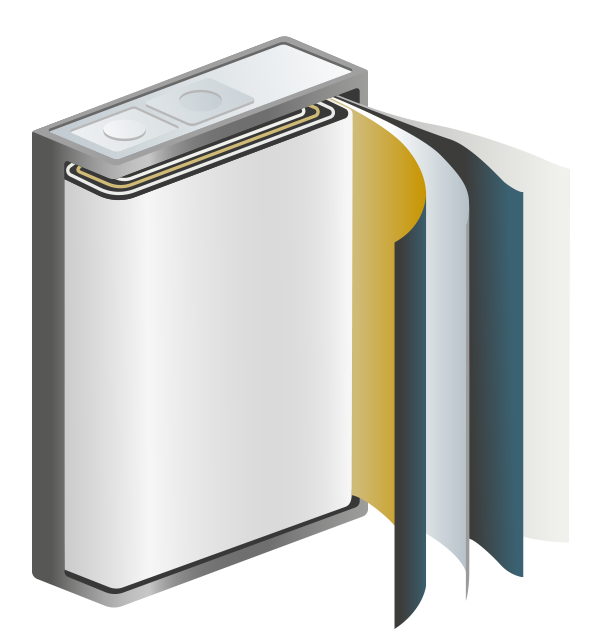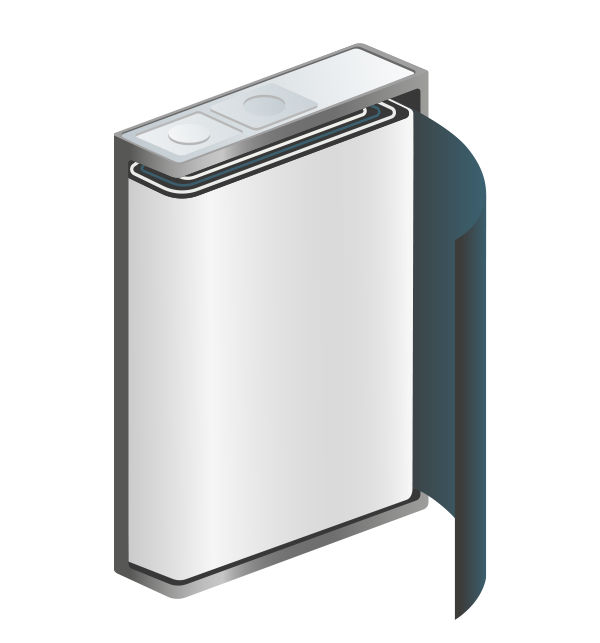New system for batteries
ENERGY STORAGE SYSTEM ON THE SEPARATOR
New electrode printing system for any energy storage system on the separator on both sides, thus avoiding the use of metallic collectors, such as copper, aluminium, steel, etc.
By treating the electrode inks with graphene carbonaceous materials, an optimum electrode conductivity is achieved for the chemical and electrochemical reactions to take place during the charging and discharging processes, without the need to use a metal collector as a support.
This new technology off ers numerous advantages for energy storage systems, such as increased energy density, lower cost, higher cell voltage, etc.
In collaboration


Development potential
ELIMINATION OF THE USE OF COLLECTORS
Metal current collectors are one of the heaviest components of energy storage systems and are hence involved in the reduction of energy density (Wh/Kg).
Collectors are one of the most expensive components of a battery, especially nowadays with the problem of material supply and geolocation. Up to now, the solutions that have been proposed have been to reduce the thickness of the collector as much as possible in order to reduce its weight and price, however, no one has ever done away with it.
Thanks to our new technology, the electrodes of the energy storage systems can be printed directly onto the separator, which signifi cantly improves their weight, price, and energy density.

Advantages
Advantages of using our development.
01
Higher energy density
by avoiding the use of metallic collectors, considerably reducing the total mass of the device. As a consequence, the energy density per kg (W·h/kg) will be improved.
02
Reduction of the final price
03
No collector oxidation/ reduction problems
04
Increased cell potential
Applications under development
versatile technology for any storage system
It is of interest to any company involved in the manufacture of energy storage systems, whether lithium batteries, sodium batteries, capacitors, supercapacitors, hydrogen cells, etc. As it is a very versatile technology for any storage system, the producer company could be able to market its products with the same (or sometimes better) performance, but at a much cheaper cost and better energy density per kg.

System Comparison
THE FUTURE IS HERE
Current system
Components of a lithium-ion (li-ion) battery

(Alluminium)
Cathode on aluminium
Anode on copper collector
Separator
Separator
Graphenano system
Components of a Graphenano battery

Container
Anode
Catode
Do you need further assistance?
ANY QUESTION WOULD BE SOLVED
Our technical support team will reach out to you shortly.
*Only corporate mail will be attended to.